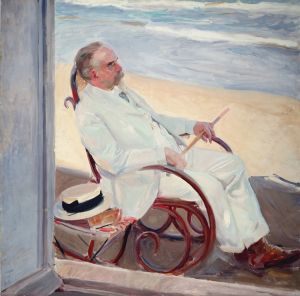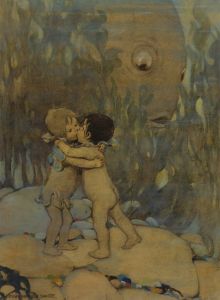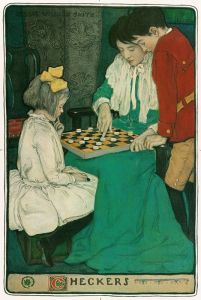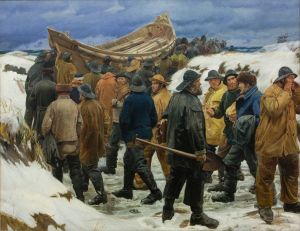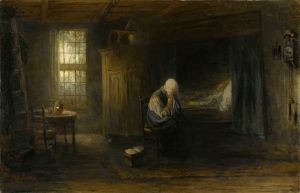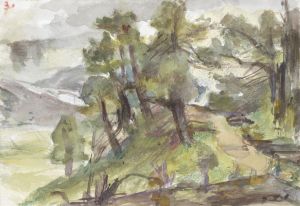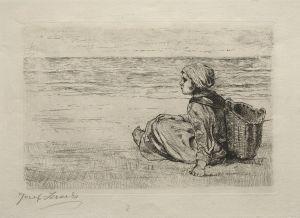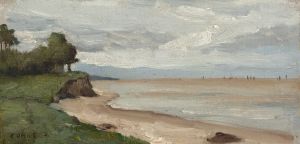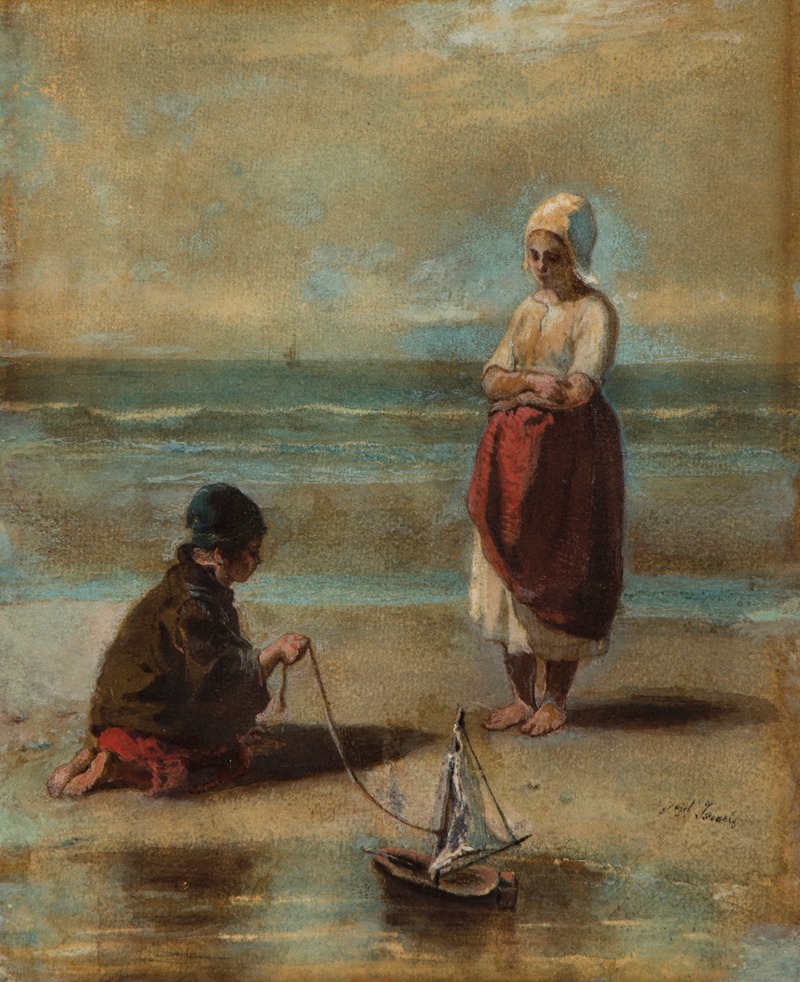
Children at the Seashore
A hand-painted replica of Jozef Israëls’s masterpiece Children at the Seashore, meticulously crafted by professional artists to capture the true essence of the original. Each piece is created with museum-quality canvas and rare mineral pigments, carefully painted by experienced artists with delicate brushstrokes and rich, layered colors to perfectly recreate the texture of the original artwork. Unlike machine-printed reproductions, this hand-painted version brings the painting to life, infused with the artist’s emotions and skill in every stroke. Whether for personal collection or home decoration, it instantly elevates the artistic atmosphere of any space.
Jozef Israëls, a prominent Dutch painter of the 19th century, is renowned for his poignant and realistic portrayals of rural and working-class life. One of his notable works, "Children at the Seashore," exemplifies his ability to capture the simplicity and emotional depth of everyday scenes. This painting is a testament to Israëls' skill in depicting the human condition with empathy and sensitivity.
"Children at the Seashore" portrays a group of children playing by the sea, a common subject in Israëls' oeuvre, reflecting his interest in the lives of ordinary people. The painting is characterized by its subdued color palette and the use of light and shadow, which create a serene yet melancholic atmosphere. Israëls' technique involves loose brushwork and a focus on the overall mood rather than intricate details, allowing viewers to engage emotionally with the scene.
The composition of the painting is carefully arranged to draw the viewer's eye across the canvas. The children, absorbed in their play, are depicted with a sense of innocence and freedom, contrasting with the vastness of the sea and sky. This juxtaposition highlights the themes of childhood and the passage of time, common motifs in Israëls' work. The horizon line is low, emphasizing the expanse of the sky and the boundless possibilities it represents.
Israëls was part of the Hague School, a group of artists who were influenced by the realist movement and the Barbizon School in France. This influence is evident in "Children at the Seashore," where Israëls combines realism with a touch of romanticism, capturing both the physical environment and the emotional undertones of the scene. The Hague School artists were known for their depictions of the Dutch landscape and the lives of its inhabitants, often focusing on the harsh realities faced by the working class.
Throughout his career, Israëls was celebrated for his empathetic approach to his subjects. His paintings often convey a sense of narrative, inviting viewers to ponder the lives and stories of the people depicted. In "Children at the Seashore," this narrative quality is present in the way the children interact with their surroundings, suggesting a moment frozen in time, full of potential and unspoken stories.
Israëls' work was well-received during his lifetime, earning him recognition both in the Netherlands and internationally. His ability to convey emotion through his art resonated with audiences, and his paintings were exhibited widely. Today, "Children at the Seashore" continues to be appreciated for its artistic merit and its reflection of 19th-century Dutch life.
In summary, "Children at the Seashore" by Jozef Israëls is a compelling example of the artist's skill in capturing the essence of human experience. Through his masterful use of composition, color, and light, Israëls creates a scene that is both specific in its depiction of a moment and universal in its emotional resonance. The painting remains a significant work within the context of the Hague School and 19th-century art, illustrating Israëls' enduring legacy as a painter of the people.





